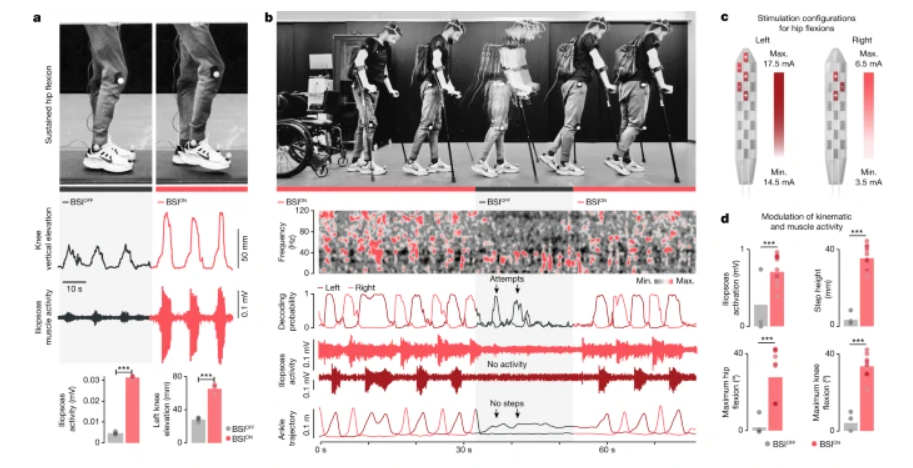 EMERGING TECH
EMERGING TECH
 EMERGING TECH
EMERGING TECH
 EMERGING TECH
EMERGING TECH
A 40-year-old Dutch man who was paralyzed in a cycling accident in China in 2011 has walked again thanks to a brain-machine interface.
Gert-Jan Oskam was told he’d never walk again after his accident, but with the help of researchers in Switzerland, he has now walked up stairs and down the street for distances of up to 100 meters. The feat is being hailed as a promising development in the quest to use technology to help people with severe disabilities.
A paper published today in Nature explained that the scientists used a “digital bridge” to connect Oskam’s brain and his spinal cord. With the help of this brain-spine interface, or BSI, participants were able to “walk, climb stairs and even traverse complex terrains.”
When the participants think about walking, the neural activity is then processed by a computer algorithm, which subsequently sends pulses to the electrodes connected to the spine. They, in turn, activate the nerves, after which the muscles start working.
What’s even more promising is the device seems to help with rehabilitation in people who have not had all of their nerves severed. After 40 sessions with the interface, even when it was turned off, Oskam was able to gain some control over his legs.
Such brain implants are widely seen as one of man’s victories over nature with technology. In 2022, Elon Musk announced that his company Neuralink would be starting human trials with similar technology. Musk has said he wants to “achieve a symbiosis with artificial intelligence” to give disabled people “full body functionality.”
Prof Grégoire Courtine of the École Polytechnique Fédérale in Lausanne, who was the team leader on the project, told the BBC that progress was slow at the start. Still, after the training sessions, he was eventually able to walk without walking aids – other than the technology itself. “Seeing him walk so naturally is so moving,” Courtine told the BBC. “It is a paradigm shift in what was available before.”
He explained that Oskam’s injury happened over 12 years ago, so if researchers can use this technology on recently paralyzed or partially paralyzed people, the “potential for recovery is tremendous.”
Support our mission to keep content open and free by engaging with theCUBE community. Join theCUBE’s Alumni Trust Network, where technology leaders connect, share intelligence and create opportunities.
Founded by tech visionaries John Furrier and Dave Vellante, SiliconANGLE Media has built a dynamic ecosystem of industry-leading digital media brands that reach 15+ million elite tech professionals. Our new proprietary theCUBE AI Video Cloud is breaking ground in audience interaction, leveraging theCUBEai.com neural network to help technology companies make data-driven decisions and stay at the forefront of industry conversations.